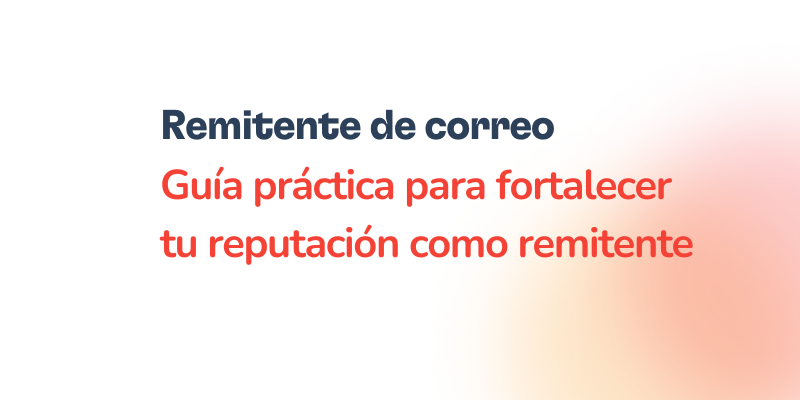Are you considering cold mailing as a way to market your services or products but not sure whether it’s the best move for you?
It can be daunting to decide which marketing method is best for your business, especially when so many rides on its success.
In this blog post, we’ll discuss what cold mailing is and go over both the advantages and disadvantages of this approach so that you can make an informed decision about whether this strategy should be part of your overall marketing plan.
Read on to learn more about how cold mailing could benefit (or hurt) your business!
What is cold mailing?
Cold mailing is the practice of sending unsolicited emails to people or businesses with whom you have no prior relationship or connection. This is typically done with the intention of promoting a product or service, generating leads, or seeking new business opportunities.
Cold mailing can be an effective way to reach potential customers, but it can also be seen as intrusive or spammy. To be successful, cold mailing requires careful targeting, crafting of compelling subject lines and messaging, and compliance with anti-spam regulations.
Advantages and disadvantages of email for your cold outreach
Cold mailing can have advantages and disadvantages. Here are some of them:
Advantages of cold mailing:
✅ Reach potential customers: Cold mailing can help you reach a large number of potential customers who might not have found you otherwise.
✅ Cost-effective: Cold mailing is generally less expensive than traditional advertising methods such as TV, radio, or print ads.
✅ Easy to track: By using email marketing tools, it’s easy to track the performance of your cold mailing campaigns, including open rates, click-through rates, and conversions.
✅ Personalization: Cold mailing can be personalized to address the recipient by their name, and the content can be tailored to their interests and needs.
Disadvantages of cold mailing:
✅ Low response rates: Cold mailing often has low response rates since recipients may not be interested in the offer or may consider it spam.
✅ Spam complaints: Cold mailing may result in spam complaints, which can damage your sender reputation and impact your ability to deliver emails to other recipients.
✅ Legal issues: Cold mailing can be subject to anti-spam regulations and laws, which if not followed, can result in fines or other legal issues.
✅ Negative brand image: Poorly crafted cold mailing messages or excessive emailing can result in a negative brand image, potentially deterring potential customers.
Overall, cold mailing can be an effective marketing strategy if done correctly, with careful targeting, and with a focus on providing value to the recipient.
How to write a cold email?
Writing a cold email can be challenging as you are reaching out to someone who has no prior relationship with you. Here are some tips to help you write an effective cold email:
1. Personalize your email
Do some research on the recipient and try to tailor your email to their interests or needs. Use their name in the greeting and make the email feel like it’s specifically for them.
2. Grab their attention
Your email needs to stand out from the countless others that the recipient receives daily. Use a catchy subject line and an engaging opening sentence that grabs their attention and entices them to keep reading.
3. Be clear and concise
Keep your email short and to the point. Be clear about why you are reaching out and what you want to achieve. Don’t include irrelevant information that could distract the recipient.
4. Provide value
Explain how your product or service can solve a problem or address a need the recipient may have. Focus on the benefits they will receive rather than just the features of your offering.
5. Include a clear call to action
End your email with a clear call to action, such as asking the recipient to schedule a call or meeting, download a free trial, or respond to your email. Make it easy for them to take the next step.
6. Close politely
Thank the recipient for their time and consideration, and include a polite closing such as “Best regards” or “Sincerely.”
7. Proofread and test
Before sending your email, proofread it carefully for typos or errors. Also, test the email on different devices and email clients to ensure that it displays correctly.
Remember that cold emailing is a numbers game, and not everyone will respond positively. However, by following these tips and refining your approach, you can increase the chances of getting a positive response.
Cold email tips
Here are some tips on how to write a successful cold email:
How to start a cold email:
🔹 Start with a catchy subject line that grabs the recipient’s attention.
🔹 Use a personalized greeting that includes the recipient’s name.
🔹 Introduce yourself and your company briefly.
🔹 Establish credibility by highlighting your experience or credentials.
🔹 Use a friendly and conversational tone to make the email feel more personal.
Cold email call to action:
🔹 Be clear about what action you want the recipient to take.
🔹 Provide a sense of urgency or an incentive to encourage the recipient to take action.
🔹 Use a strong and direct call to action that stands out from the rest of the email.
🔹 Make it easy for the recipient to take action by including a link or contact information.
Cold email reply:
🔹 Respond promptly to any replies you receive.
🔹 Be professional and courteous in your response.
🔹 Address any questions or concerns the recipient may have.
🔹 Provide additional information or resources if necessary.
🔹 Keep the conversation going by asking follow-up questions or suggesting the next steps.
Cold email conversion rate:
🔹 Measure your conversion rate by tracking the number of recipients who take the desired action.
🔹 Analyze the data to identify areas for improvement.
🔹 Experiment with different email formats, messaging, and calls to action to improve your conversion rate.
🔹 Focus on providing value to the recipient to increase the likelihood of conversion.
Cold email response rate:
🔹 Measure your response rate by tracking the number of recipients who reply to your email.
🔹 Analyze the data to identify patterns and trends.
🔹 Experiment with different subject lines, messaging, and targeting to improve your response rate.
🔹 Follow up with recipients who do not respond after a certain period.
Best time to send cold emails:
🔹 Test different times and days of the week to find the best time for your audience.
🔹 Consider the recipient’s time zone and schedule when sending emails.
🔹 Avoid sending emails during holidays or weekends when people may be less likely to check their emails.
🔹 Use email scheduling tools to send emails at the optimal time.
Our Warmy tool was designed exactly for this, warm up your email with Warmy and increase your profits from cold email campaigns
Conclusion
The cold email strategy is very much underestimated, many call it spam, but if you do it right, and follow the rules and guidelines, it will bring you new customers and profit.
The most important rule to keep in mind is the need to warm up your domain before sending emails, otherwise, your emails will end up in the spam folder.
Read also – Importance of Email Warmup before Cold Outreach






![Text on a white background reads: SMTP Error 451 How to Resolve [SOLVED] in bold black and red text. A faint, blurred orange spot in the lower right corner adds subtle emphasis to the SMTP Error 451 issue.](https://warmy-blog-wordpress-bucket.s3.amazonaws.com/wp-content/uploads/2025/12/24095059/SMTP451.webp)





